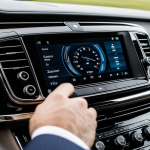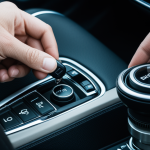Overview of UK Traffic Rules
Navigating UK traffic laws is crucial for maintaining road safety. These laws encompass various road safety regulations designed to protect all users. Key regulations include adherence to speed limits, correct use of seat belts, and the prohibition of mobile phone use while driving. Drivers must also abide by rules regarding drink driving and maintain vehicle roadworthiness. Adhering to traffic regulations is essential to reduce accidents and ensure safety.
Recent updates in traffic laws have introduced stricter penalties for mobile phone use and greater emphasis on cyclist safety. This reflects the government’s commitment to adapting regulations to contemporary road safety concerns.
Also to see : Essential Safety Guidelines for Managing and Disposing of Hybrid Car Batteries
Understanding these laws is not only about avoiding fines but fostering a culture of responsibility. It promotes safer driving environments, reduces accidents, and protects the vulnerable road users. Furthermore, awareness and compliance with these regulations are pivotal in achieving a safer road network. Continuous updates in the laws showcase the importance of adhering to traffic regulations.
For both new and seasoned drivers, staying informed about recent legislative changes can directly enhance safety. By aligning behaviour with current laws, road safety for drivers and pedestrians alike improves significantly.
Also to discover : Ultimate Guide to Headliner Maintenance: Effective Tips for Cleaning and Preserving Your Car’s Roof without Sagging
Impact of Dashboard Cameras on Road Safety
Dashboard cameras have emerged as pivotal tools in enhancing road safety by providing concrete evidence in case of accidents. Recent road safety statistics indicate a visible decline in accident rates where dashboard cameras are utilised. How significant is this impact? According to industry reports, areas with widespread dashboard camera use have seen a reduction in accident claims by up to 10-15%.
Beyond statistics, individual case studies further underscore their effectiveness. For instance, a region highly impacted by frequent collisions saw a notable decrease after many drivers adopted dashboard cameras. This shift not only ensures responsible driving but also aids in efficiently resolving disputes by providing clear visual records.
Experts unanimously highlight the efficacy of dashboard cameras in positively modifying driver behaviour. They argue that constant surveillance encourages cautious driving decisions, ultimately fostering a safer environment on UK roads. Such devices discourage reckless actions, knowing that any misconduct is caught on camera, promoting accountability.
In conclusion, as road safety statistics suggest, incorporating dashboard cameras is more than a technological trend—it’s an essential step towards safer, more responsible driving habits. The statistical backing and expert opinions solidify their role in advancing road safety.
Legal Implications of Using Dashboard Cameras
When considering the use of dashboard cameras in the UK, it’s crucial to understand the legal aspects surrounding their operation. As these devices record potentially sensitive information, they tread a fine line between enhancing driver safety and infringing on privacy rights.
UK dashboard camera laws require footage to respect privacy rights on public roads. Installing cameras with awareness of privacy concerns can prevent potential breaches. It’s advised not to capture the interiors or identities of passengers without consent. Similarly, audio recording may pose additional legal challenges if conversations are recorded without explicit permission.
Failing to comply with these regulations can lead to serious consequences. Misuse of recorded footage, such as unauthorised sharing or using it with malicious intent, can result in legal penalties. Drivers should remain informed on the legal considerations to use dashboard cameras responsibly and within the framework of the law.
Moreover, having a thorough understanding of these legal aspects ensures that drivers utilise cameras lawfully, thus avoiding unnecessary legal disputes while retaining the benefits they offer for safety and accountability in road traffic incidents.
Benefits of Dashboard Cameras for Drivers
Dashboard cameras are essential in enhancing driver safety. During accidents, these devices promptly capture critical footage, serving as unbiased witnesses. This real-time documentation can simplify insurance claims, substantiating drivers’ accounts and expediting resolution.
One significant advantage is the insurance benefits they offer. Some insurers recognise the value of dashboard cameras and provide discounts on premiums. The visual evidence helps clarify liability issues, reducing fraudulent claims and ensuring fair settlements. This aligns with the growing need for transparent road safety measures.
Moreover, dashboard cameras encourage improved driver accountability. Knowing that actions are being recorded, drivers are more likely to practice caution and adhere to traffic laws. This monitoring can lead to a reduction in reckless driving behaviours, fostering safer roads.
Dashboard cameras also serve as educational tools. Reviewing footage enables drivers to reflect on their driving, identifying areas for improvement. This proactive approach to safety not only benefits individual drivers but also contributes to the broader goal of reducing road incidents.
In summary, dashboard cameras are robust tools for enhancing road safety and accountability, offering both immediate incident support and long-term behavioural improvements. Their presence in vehicles is an investment in safer driving environments.
Selecting and Installing Dashboard Cameras
Choosing a dashboard camera involves considering several critical features to meet drivers’ unique needs. When selecting dashboard cams, prioritise high-resolution video, night vision capabilities, and a wide field of view. These features ensure comprehensive and clear footage, vital for resolving road incidents. Some cameras also offer GPS functionality, which records speed and location data, enhancing accountability.
Key Features to Consider
- Resolution: Opt for cameras with at least 1080p for clear footage.
- Night Vision: Essential for capturing videos in low light conditions.
- Wide Field of View: Greater coverage can ensure all incidents are recorded.
- GPS: Provides location and speed data, adding valuable context in disputes.
Recommended Brands and Models
Exploring reliable brands is crucial. Consider highly rated models from companies like Nextbase, Garmin, and Thinkware. These brands consistently provide quality and durability, ensuring effective performance.
Installation Guidelines
Proper installation is key for optimal performance. Ensure the camera is securely mounted, avoiding obstructions to the driver’s view. Regular maintenance like cleaning lenses can further improve video quality. Pay attention to power supply connections to prevent disruptions in recording, ensuring continuous protection on the road.
User Testimonials and Case Studies
Dashboard cameras have transformed many drivers’ experiences, offering tangible benefits that extend beyond immediate road safety. Numerous user experiences highlight how these devices have served as invaluable allies on the road. For instance, Jane Doe, a long-haul driver, recounts a scenario where her dashboard camera captured a crucial piece of evidence that vindicated her in a complex accident dispute.
Driver feedback often reflects the efficacy and reliability of different dashboard camera models. Users frequently praise brands like Nextbase and Garmin for delivering on their promises of clarity and durability. According to a recent survey, drivers using these models reported fewer incidents of disputed claims, underscoring the cameras’ role in enhancing driver accountability. John Smith, another enthusiastic user, noted significant reductions in his premium costs due to the insurance benefits tied to his camera use.
Additionally, comparing user feedback with official road safety statistics offers deeper insights. While statistics show a quantifiable decrease in accidents in areas with high camera adoption, personal stories add a human element to these figures, highlighting dashboard cameras’ efficacy in real-world applications.
Future of Dashboard Cameras and Road Safety
Innovations in dashboard cameras are paving the way for enhanced road safety through cutting-edge technology. Anticipated future trends suggest that advancements like AI integration and real-time traffic analysis could revolutionise how these cameras function. By embedding artificial intelligence, these devices might soon detect hazardous situations, alert drivers, and even initiate preventive measures. This proactive capability holds the potential to further decrease accident rates.
Predictions indicate that new features, such as 360-degree filming and augmented reality displays, will significantly boost road safety. These enhancements can provide drivers with a comprehensive view of their surroundings, thus reducing blind spots and improving situational awareness. Additionally, integrating dashboard cameras into the broader framework of smart city initiatives could streamline traffic management, using the collected data to optimise traffic flows and reduce congestion.
With these forward-thinking developments, dashboard cameras are becoming central to the evolution of safer driving practices. As road safety innovations continue, the role of dashboard cameras in promoting responsible driving and enhancing driver accountability is undeniable. Embracing these trends is likely to lead to substantial improvements in road safety and contribute significantly to the vision of smarter cities.





